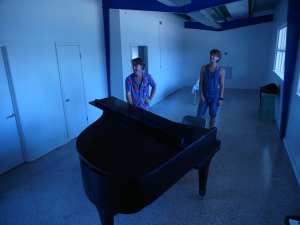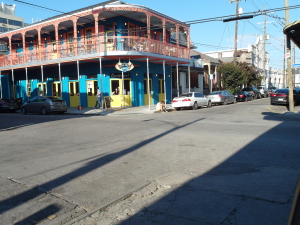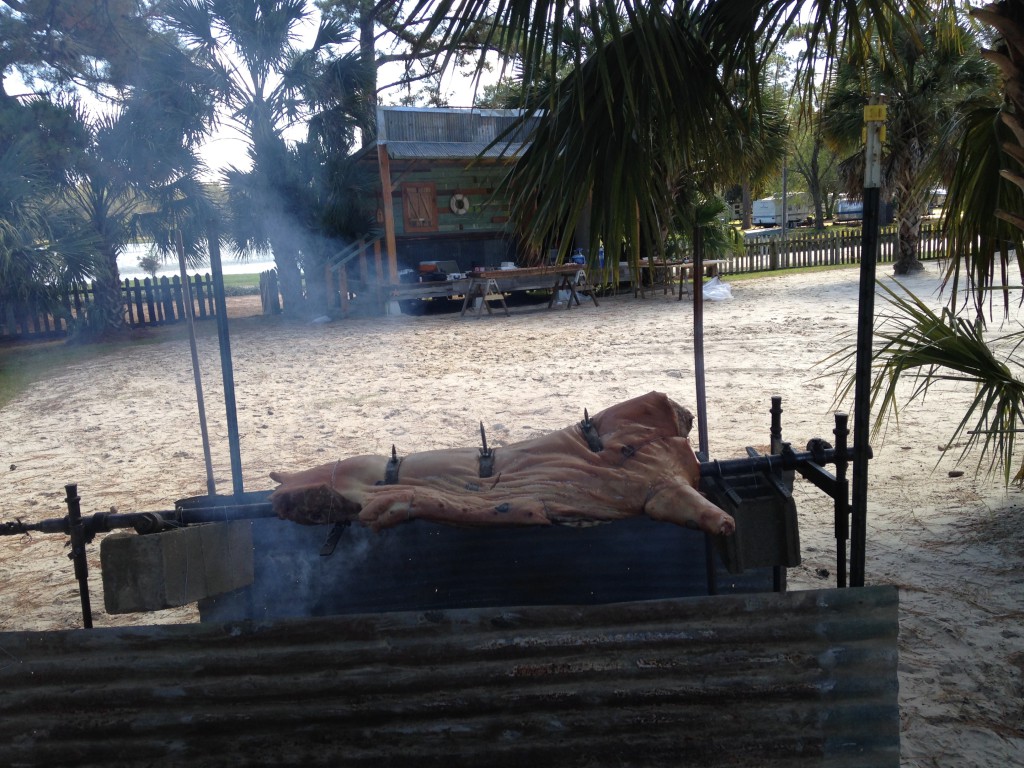It has been two weeks since Jasper Slijderink and me, Stan Vreeken, arrived in New Orleans. We are both musicians. Besides having our own band (The Big Hunger) we are part of Tijdelijke Samenscholing (Temporary Gathering), the theatre group with whom we work on a new play about New Orleans and its music. Stepping out of Louis Armstrong Airport, the air was humid. It was blazing hot and not long after we picked up our bags a heavy summer rain gave us a big, wet and warm welcome.
In the last days the air has cooled down a little and we’ve seen numerous bands and musicians, both good and bad. In Frenchmen Street we’ve seen brass-bands booming their horns into an overcrowded street, we’ve heard ragtime pianists display their nostalgia for the ‘Roaring 20’s’, we’ve been harassed by street-musicians with less teeth in their mouths then strings on their battered guitars, and we’ve been surprised by crafty singer-songwriters, hidden in dimly lit porches or on street corners, trying to get the drunken passersby to stop and listen. Throughout the whole city small bars and restaurants are scattered around, offering a huge variety of live-acts.

Jon Cleary & The Absolute Monster Gentelmen @ Maple Leaf Bar
The city breathes music, its air is smelling like gasoline, sweat, alcohol and, at night, a sweet hint of jasmine. We’ve been touring the whole city on our bikes. Avoiding the cracks and potholes in the asphalt that we share with rows of big American cars and trucks, we’ve driven as far as Maple Leaf Bar, roughly an hour from our home in Holy Cross. Every Monday Jon Cleary plays the Maple Leaf. Jon and his band, The Absolute Monster Gentlemen, are among the best bands the city has to offer. Jon is one of the few pianists in town who still masters the iconic, but vanishing, piano-style that was made famous by the likes of Allen Toussaint, James Booker, Professor Longhair and Dr. John. Last week Jon invited us to come over to his house in the Bywater. There, he gave us a short masterclass on how to play New Orleans Style on piano, and a lecture on the (social) history of New Orleans Jazz and funk. The day before, we had met with his guitarist, Big D, whose size does more than justice to his nickname. After I played him two of my new songs, Big D invited us to come over to his studio in Florida. Somewhere in October we will make the three and a half hour drive to record three songs with some of the best musicians in the Southern States. As Dr. John already sung in the opening sequence of ‘The Princess and The Frog’: “Dreams do come true in New Orleans”.

Jasper taking piano lessons with local piano legend Tom McDermott
Besides meeting new musicians daily, we talk a lot with the locals on the street. Most times these conversations start with handing out a cigarette, and most times our partner in dialogue is of African-American descent. We’ve noticed that the young (caucasian) artistic elite in the city is much harder to approach then the everyday-man on the street. These conversations offer the most interesting pieces of information. With people like Monty, O.G. George and Tattoo we spoke openly about poverty, alcohol, drugs, Katrina, crime and other social issues that, besides music, are so evident in this city. New Orleans is not only the place where jazz and funk were born, it is also the city with one of the highest murder rates in the U.S. Throughout the day the streets are charming, and the neighborhoods are a welcoming array of colorful little houses and cosy little cafe’s. At night those same streets turn dark and more threatening in their abandonment. Especially for the weaker of heart, I am definitely one them, the ride home can be anxious and long. A striking example, for instance, is when we were waiting for Dr. John to start his show. We were smoking a cigarette outside of The Joy Theater that is situated on Canal Street, one of the main arteries of New Orleans traffic. Not more than 15 feet from where we were standing two young men (barely 18 years old) stopped in front of a traffic sign, speaking loudly to each other. I observed them for a short while and then I saw something that shook me to the bone. Attached to their belts I saw two guns dangling from their blue jeans, the red traffic lights reflected in the silver barrels. They carried their pieces in plain sight, for everyone to see and shiver. I realized, even though I knew it, that most people here must have guns, hidden in the dashboard cups of their cars, and this realization troubles me.

Waiting for Big D, who arrived 1.5 hour late.
Two weeks after our arrival my infatuation with New Orleans is still far from over. But as it seems to go with all relationships, I slowly learn that there are less pleasant sides behind the inviting facade of The Big Easy. I look forward to the next five weeks, to the arrival of Michiel Bakker and Carole van Ditzhuyzen – the actors and founders of Tijdelijke Samenscholing, to meet up with more locals and to hear more music. Hopefully my relationship with the city will only change for the better, and I will come to a deeper understanding and appreciation of this historical city, in all her complexities.




